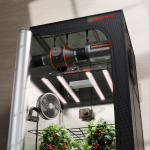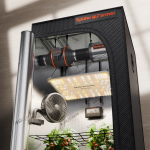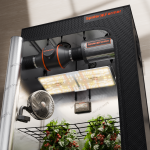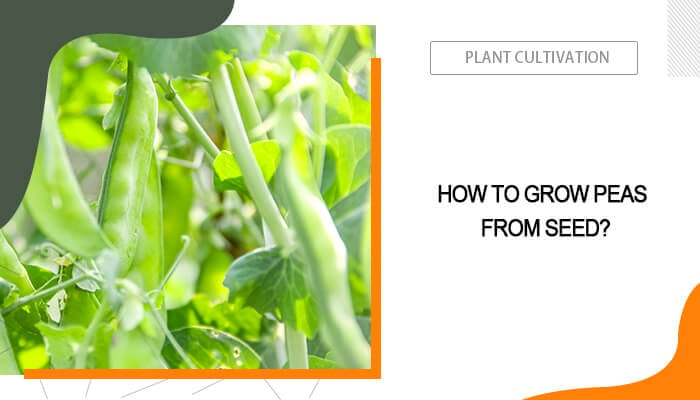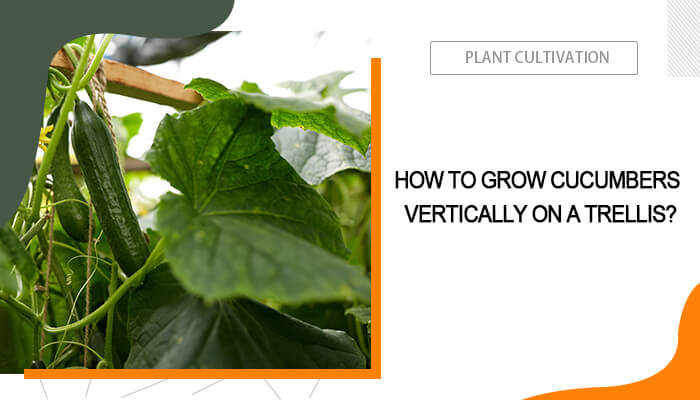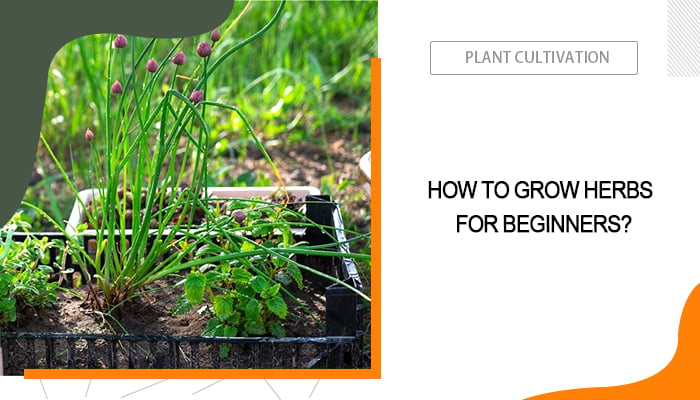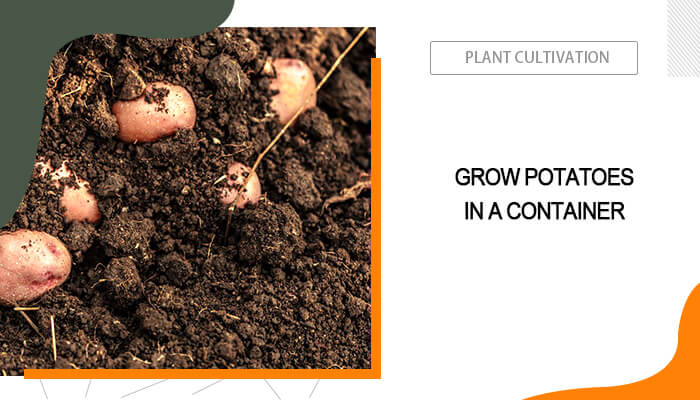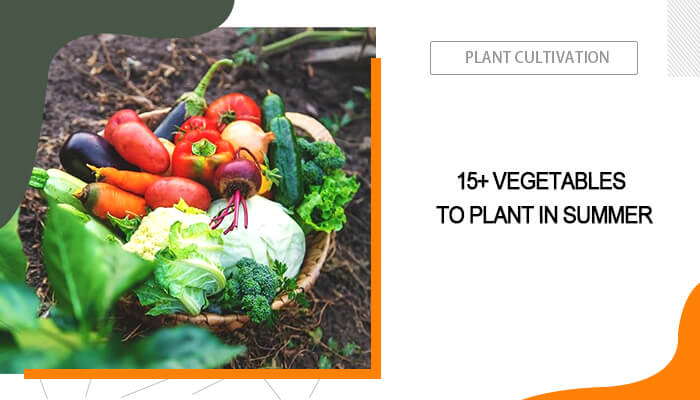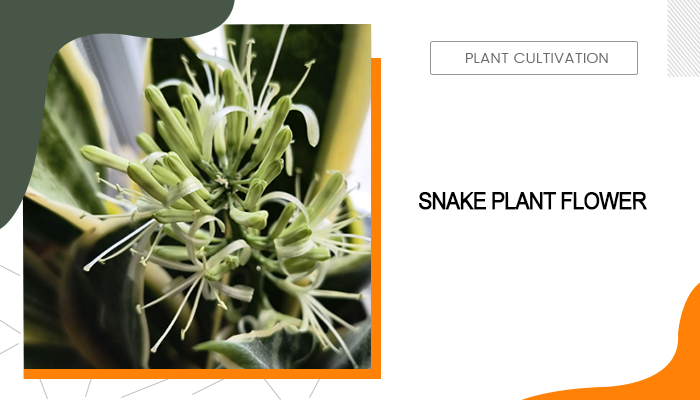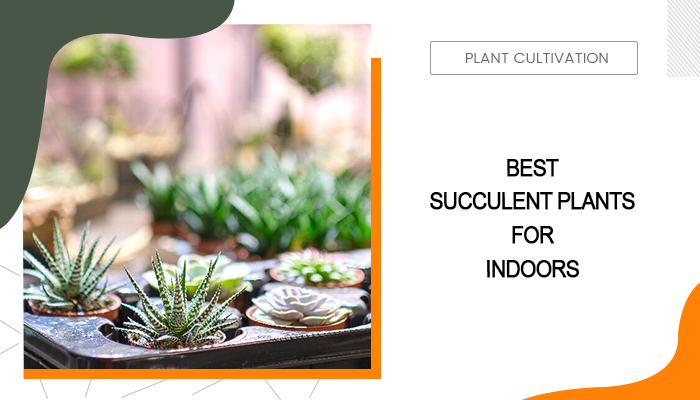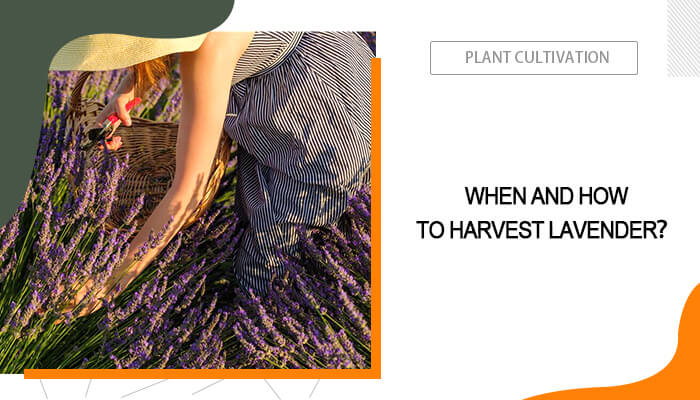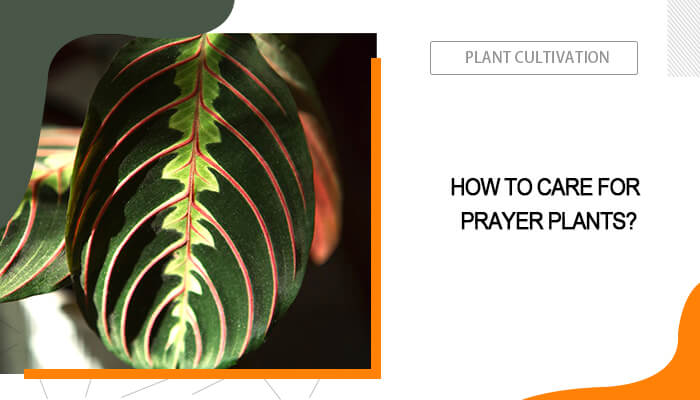Cucumber plants have both male and female flowers, and the pollen from the male flowers must be transferred to the female flowers for successful fertilization. During cucumber growth stages, this process is typically carried out by pollinators such as bees.
If these natural pollinators are absent, you may need to manually pollinate cucumbers. Manual cucumber pollination allows you to take control of the pollination process, ensuring that each female flower receives the necessary pollen from the male flowers.
This guide will walk you through the process of identifying male and female flowers, collecting pollen, and transferring it to the female flowers, ensuring that your cucumber plants produce healthy, robust fruits.
Table of Contents
Does Cucumber Self-Pollinate?
Generally, cucumbers don’t self-pollinate, though they are monoecious plants, and they have both male and female flowers on the same plant. However, they need to produce fruit via cross-pollination. Nevertheless, there are parthenocarpic cucumber varieties that can produce fruit without the need for pollination. These varieties are often referred to as “self-pollinating” ones. But this is a misnomer since they don’t technically pollinate themselves. Instead, they bypass the pollination process entirely.
Can You Make a Male Cucumber Flower into a Female?
No, you cannot transform a male cucumber flower into a female flower. Male and female flowers have distinct genetics. The gender of each flower is determined during the plant's development and is influenced by genetic and environmental factors. However, you can influence the overall ratio of male to female flowers on the plant through environmental conditions. For example, lower temperatures tend to promote the development of more female flowers. Additionally, certain cucumber varieties are bred to produce more female flowers, which can help increase fruit yield.
How to Manually Pollinate Cucumbers?
When natural pollinators like bees are scarce, or when growing cucumbers in controlled environments such as greenhouses, you can hand-pollinate cucumbers. For successful fruit production, pollen from the male flowers must reach the female flowers. Pollinators typically carry out this process, but in their absence, manual pollination becomes essential. In this section, we’ll walk you through the process, highlighting key steps and tips to achieve successful cucumber pollination and fruit set.
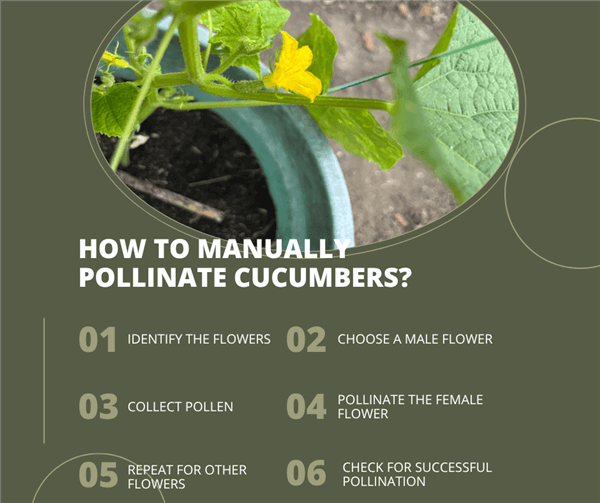
How to Manually Pollinate Cucumbers?
Identify the Flowers
Locate male and female flowers. Male flowers have thin stems and no fruit, while female flowers have a swollen base that will develop into fruit.
Choose a Male Flower
Select a fully open male flower for pollination.
Collect Pollen
Gently remove the petals of the male flower to expose the stamen, then use a small brush, cotton swab, or your fingertip to collect the yellow pollen.
Pollinate the Female Flower
Find a female flower and carefully transfer the collected pollen to the stigma at the center of the female flower.
Repeat for Other Flowers
Pollinate multiple female flowers to increase your chances of fruit development. You can resolve the
Check for Successful Pollination
Over the following days, check the female flowers. If pollination is successful, the base of the flower (small fruit/ovary) should begin to grow into a cucumber.
Further Reading: How to Grow Cucumbers on a Trellis >
How to Pollinate Cucumbers without Male Flowers?
If you find yourself in a situation where your cucumber plants lack male flowers, you can take alternative measures to pollinate cucumbers without male flowers.
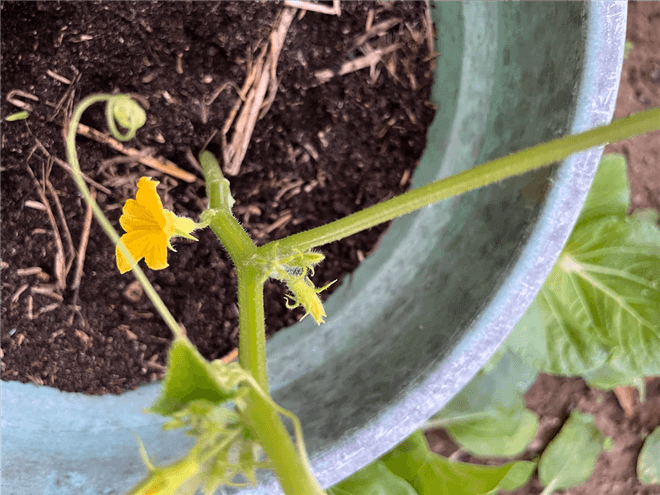
How to Pollinate Cucumbers without Male Flowers?
Way 1. Use Parthenocarpic Varieties
Parthenocarpic cucumber varieties are bred to produce fruit without the need for pollination. These varieties are ideal for environments where pollinators are scarce, such as greenhouses or urban gardens. Some popular parthenocarpic varieties include:
- Diva: Known for its sweet, tender, and seedless fruits.
- Passandra: A greenhouse favorite with medium-sized, crunchy, and flavorful cucumbers.
- Picolino: Small, snack-sized fruits that are sweet and perfect for pickling.
Way 2. Mechanical Pollination Tools
In commercial settings, vibrating tools are sometimes used to shake pollen loose and facilitate self-pollination. This method can be effective for plants that have both male and female flowers on the same plant.
Way 3. Attract Pollinators
If possible, attract pollinators to your garden by planting nectar-rich flowers and herbs. This can help increase the chances of natural pollination even if male flowers are scarce.
Way 4. Timing Your Planting
Ensure that your cucumber plants are flowering at the same time. Sometimes, asynchronous flowering can lead to a lack of male flowers when female flowers are open.
Way 5. Use a Pollenizer Plant
If you are growing a variety that only produces female flowers, consider planting a pollenizer variety nearby. These plants produce male flowers that can provide the necessary pollen.
How to Tell If a Cucumber is Pollinated?
To tell if a cucumber is pollinated, you can look for several key signs:

How to Tell If a Cucumber is Pollinated?
- Bee Activity: Bees are the most reliable indicators of cucumber pollination. If you spot bees buzzing around your cucumber plants, it’s a good sign that pollination is occurring.
- Cucumber Starts to Plump Up: Once a flower is pollinated, the cucumber begins to develop and grow larger. If you notice a cucumber starting to swell, this is a classic sign that pollination has taken place.
- Baby Cucumbers Forming: When you see tiny cucumbers forming at the base of a flower, it means that pollination has occurred. This is unmistakable proof of successful pollination.
- Flower Wilting: After fertilization, the flower’s job is done, leading to its natural decline. A wilted flower can often signify successful pollination.
- Presence of Male and Female Flowers: Recognizing the presence of both male and female flowers is essential for pollination. Male flowers typically appear first, followed by females, which have a small cucumber-shaped ovary at their base.
- Increased Insect Activity: The presence of increased insect activity around your cucumber plants often indicates active pollination. Insects like bees, butterflies, and even ants can contribute to the pollination process.
- Hand Pollination Results: If you have manually pollinated your cucumbers, observing the results can confirm its effectiveness. Regular practice may improve the set and yield.
- Color Change in Cucumbers: As cucumbers mature, they often shift from a bright green to a darker shade. This transformation signifies that the cucumber is developing well.
Conclusion
In conclusion, it’s a valuable technique for gardeners to manually pollinate cucumbers. By learning the differences between male and female cucumber flowers and the essential steps to hand-pollinate cucumbers, you can overcome poor natural pollination due to weather and lack of pollinators. This boosts fruit set success, controls genetic traits, and enhances productivity and quality with patience and attention.

